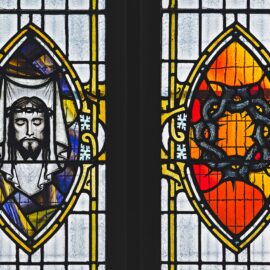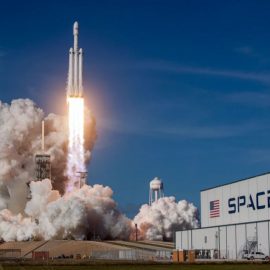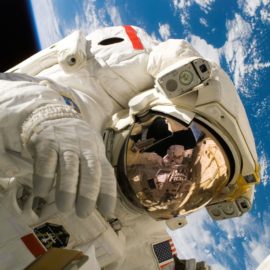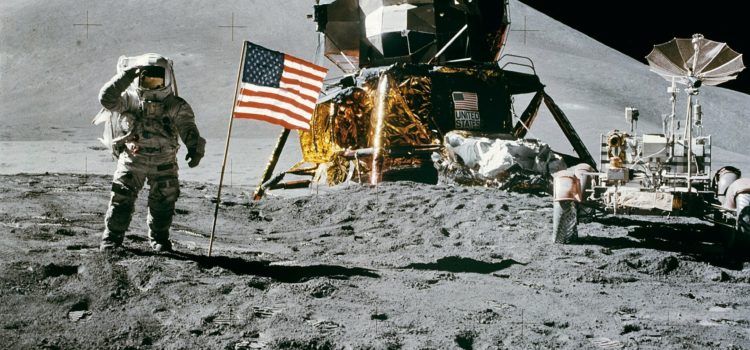
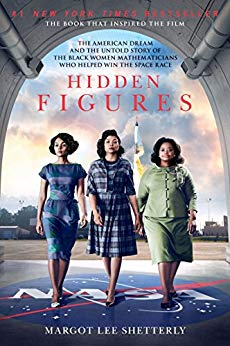
This article is an excerpt from the Shortform summary of "Hidden Figures" by Margot Lee Shetterly. Shortform has the world's best summaries of books you should be reading.
Like this article? Sign up for a free trial here .
What was the Space Task Group? What role did it play in the first manned space missions, and in getting to the moon?
The Space Task Group was formed in 1958 and was a working group with the goal of achieving human spaceflight. Singularly focused on its goal, the Space Task Group included many brilliant minds, including Katherine Johnson of Hidden Figures.
Keep reading to find out more about the Space Task Group, and Katherine Johnson’s contributions.
Forming the Space Task Group
NASA assembled a brain trust at Langley, called the Space Task Group. This was a semi-autonomous working group, composed mainly of engineers from Flight Research and PARD. Their mission, codenamed Project Mercury, was to launch a manned craft into orbit, research the effect of space travel on humans, and ensure safe reentry to Earth of both the astronaut and the spacecraft. One of the people angling to get a permanent role in the NASA Space Task Group was Katherine Johnson, a member of the West Computing group and brilliant mathematician.
Katherine’s workspace was abuzz with talk of space. NASA’s top engineers from Flight Research and PARD were discussing orbital mechanics, rocket propulsion, reentry, solar system physics, and trajectories. Katherine hung on every word of these discussions, angling for every opportunity she could get to hear even snippets of conversation. She yearned to be part of these meetings and conversations and knew that she had valuable skills to offer.
Langley presented engineers with a grueling research review process. To get a technical report published, an engineer needed to present it at an editorial meeting, during which a committee of subject matter experts would review and scrutinize every detail of the report while grilling the researcher on the soundness of the information within it. The committee was thorough (and often quite harsh) in rooting out inconsistencies and poorly reasoned conclusions. The whole process could take months, even years.
“Girls Don’t Go to the Meetings”
Katherine was helping the senior researchers prepare these reports, which were beginning to be generated at an increasingly steady pace. She took the opportunity to pepper the engineers with questions, both to satisfy her own bottomless curiosity and to demonstrate her intellectual bona fides to the team. But because the topic was so unknown, she was discovering the answers right alongside the engineers. Despite her desire to contribute more to the mission by participating in the editorial meetings, however, she was still excluded from them, being told bluntly by her male colleagues, “Girls don’t go to the meetings.”
Her insistence on being included in the process was notable in an era when, even in the workplace, women were expected to “act like ladies” and patiently wait for assignments to be given to them by their male supervisors. That women might have the same passion for the work as their male colleagues seemed to have crossed no one’s mind. But Katherine was undaunted. For her, it would have been a betrayal of her own confidence and that of the people who had helped her get this far to turn her back on the greatest journey of exploration in human history, simply because she was a woman. Additionally, it interfered with her ability to do her work in a timely manner for the NASA Space Task Group.
So she persisted. She kept asking to come to the meetings, always showing the utmost respect for her colleagues (which was genuine), but also the confidence that came from knowing that she truly belonged in the room. Her persistence paid off. The engineers couldn’t come up with a rational explanation for why someone so obviously committed to the cause and qualified to take on the challenge shouldn’t be allowed to contribute. In 1958, Katherine entered the editorial meetings of the Aerospace Mechanics Division of NASA.
Focus on the Mission
Within the Space Task Group, the demands of the work became all-consuming. Staying at work until after ten o’clock at night was normal, but the engineers were laser-focused on achieving their monumental task. Still, there were enormous engineering and physics challenges to overcome in the quest to launch a man into orbit.
The first problem was designing the vessel that would carry the astronaut into orbit. It would need to be capable of withstanding the extreme heat that would be generated when the craft rocketed through the friction of the atmosphere. After rejecting earlier needle-shaped designs (which testing showed would fail to deflect the heat), the team designed what would ultimately become the Mercury space capsule—a blunt-shaped vessel, six feet wide, eleven feet long, and weighing 3,000 pounds.
The next hurdle was selecting an astronaut. Candidates needed to be small enough to fit inside the small cabin of the capsule: only men under five feet eleven inches and under 180 pounds were to be considered. After screening candidates for the appropriate physical, age, education, and background credentials, NASA unveiled the “Mercury Seven” at a 1959 press conference. Their training facility was established at Langley, adjacent to the NASA Space Task Group. Katherine had the opportunity to meet and rub shoulders with this elite cadre, who had suddenly become some of the most famous people in the world.
The team also needed to work out how to blast the man and the craft into orbit. The team of engineers with whom Katherine worked was tasked with mapping the exact trajectory of the spacecraft, from the second it lifted off the launchpad to the instant it landed back on Earth (or, more accurately, splashed down in the Atlantic Ocean). Katherine had to process the numbers generated by the proposed trajectories over and over, re-calculating the figures every time any slight detail in the flightpath was changed.
There was zero room for error, as everything needed to be calibrated perfectly in order to launch the craft and return the astronaut safely. Katherine’s ballistic trajectory tables would determine whether or not the returning astronaut would land near enough to the waiting navy ships to be speedily scooped out of the sea and brought to safety. Even the slightest error would result in the craft missing its mark, putting the astronaut in mortal danger. This was made all the more complicated, as the capsule would both be launching from and landing back on a moving target: the orbiting planet Earth.
But Katherine, as ever, was undaunted by the task. She had proven herself an incomparable mathematician and a quick study with the higher-level conceptual work. She was straightforward with her bosses, telling them, “Tell me where you want the man to land, and I’ll tell you where to send him up.”
Katherine authored her first research report, “Determination of Azimuth Angle at Burnout for Placing a Satellite over a Selected Earth Position” and helped shepherd it through the rigorous editorial and publication process. Its publication in September 1960 was the first from her division by a female, an achievement for her, for women, and for the Space Task Group.
When astronaut Alan Shepard became the first American to travel to space in Langley’s Mercury-Redstone 1 capsule in May 1961, it was a moment of triumph for the entire team. Although the enthusiasm was somewhat tempered by the fact that Soviet cosmonaut Yuri Gagarin had successfully made it to space the month before (and had achieved orbit, which Shepard’s craft had not), it proved that the United States had the technological capability to compete in the space race. It emboldened American policymakers and was a strong boost of confidence for a nation that feared it was falling behind its Cold War rival. Shortly after this, Kennedy challenged the nation to cross another frontier. He pledged that the US would complete a successful manned mission to the Moon by the close of the 1960s.
The Space Task Group played an essential role in several major space travel missions. The group’s scientific discoveries helped achieve the greatest feats in space travel in history.

———End of Preview———
Like what you just read? Read the rest of the world's best summary of Margot Lee Shetterly's "Hidden Figures" at Shortform .
Here's what you'll find in our full Hidden Figures summary :
- How brave black women were instrumental to the American space race
- How they confronted racism and sexism to forge a better future
- Their enduring legacy in American history



